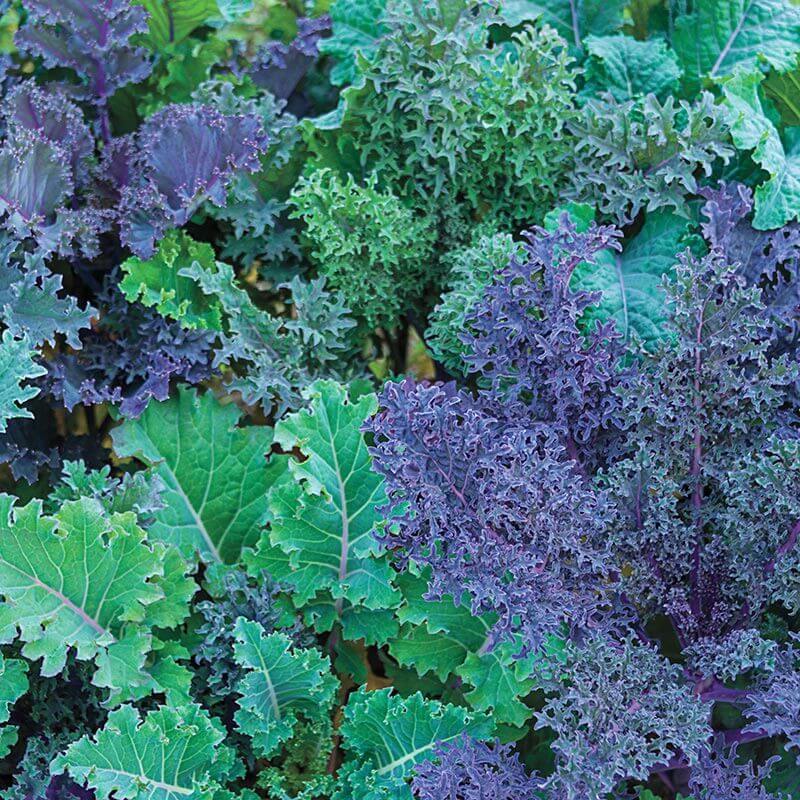Kale, when to plant? Want to know when to plant kale in South Africa? Try our tips below
When to Plant Kale for a winter or spring harvest in the South African climate?
The article below promises all the advice you need when it comes to the correct planting times for a tasty kale harvest from the home-grown vegetable garden.
Kale is an easy grower and an absolute must in any winter vegetable garden. Cooler weather helps sweeten the vitamin packed leaves to a delicious nutty taste. Whereas dry hot weather will deliver poor unnasty results. So, planting kale at the correct time and season is vitally important to avoid disappointment.
Kale when to plant these delicious nutritious leafy vegetable greens?
The best time to plant kale seeds in South Africa is in autumn (February to March), plant your kale three months before the first frost date is expected. Most of the interior of South Africa can expect frost from the month of May.
Kale seedlings also perform best if planted from May up to latest July, depending on where in South Africa you are situated.


When to plant kale for a spring harvest?
When to plant kale for a spring harvest in the South African climate?
For a stunning foliage harvest in spring plant kale anytime from March to June in South Africa, they will grow through winter allowing to pick leaves as the plants mature until the weather warms at which point Kale leaves become less tasty and the plants grow woody.
In areas with hot summers, you want to avoid sowing kale until temperatures start to cool off. The cooler weather of the autumn and winter months brings out the sweet, nutty flavour of kale.
Kale is broadly grown as a winter vegetable; this delicious nutritious foliage crop will perform well in the cooler months of the year and promises to yield a good harvest all winter long.
As with most winter vegetables Kale will tolerate being planted in late summer, throughout autumn and throughout winter. Just make sure you have allowed enough time for your kale plants to mature before the severe heat of mid-summer arrives.
For a bountiful harvest, it is best if kale seeds are sown in seed trays and transplanted into the vegetable garden once they have grown large enough to comfortably handle.
You can also plant your kale seeds, directly into well prepared rich open soil, but make sure the soil remains moist and be carful to sow kale seeds evenly spaced apart with plenty of growing room around each to avoid disease build-up.
Kale loves growing in the cold making it the perfect vegetable to add some much-needed nutrients to your diet during the cold winter months.
A good layer of mulch around the base of kale plants will ensure favourable soil temperatures and help retain moisture.
Tips When Planting Kale:
The roots of kale plants run horizontally from the plant base. To keep the soil cool, retain moisture, and make it easier for roots to feed, use a good mulch around the base of your plants.
Pull plants up by their roots when it becomes particularly hot in the summer to make place in your garden for more heat-loving foods until October arrives for another round of planting.
Grow For Life Health Facts about Kale:
Kale Is One of The World’s Best Sources of Vitamin K
Kale Can Help Lower Cholesterol
Kale is full of compounds believed to have protective effects against cancer

In conclusion: Plant Kale any time in the months leading up to and throughout autumn.
Very few areas in South Africa actually reach temperatures too cold or too severe for Kale to survive. However, in this case heat is not your friend and will lead to foul tasting bitter leaves. These hardy leafy crops grow right through winter throughout the country and promise to surprise you and the picky kids around the neighbourhood with a delicious nutritious treat picked right out of the garden.



Info about planting